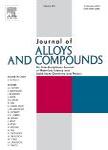版权所有:内蒙古大学图书馆 技术提供:维普资讯• 智图
内蒙古自治区呼和浩特市赛罕区大学西街235号 邮编: 010021

作者机构:Sichuan Univ Sch Chem Engn Chengdu 610065 Peoples R China Sichuan Univ Sci & Engn Sch Chem Engn Zigong 643000 Peoples R China
出 版 物:《JOURNAL OF ALLOYS AND COMPOUNDS》 (J Alloys Compd)
年 卷 期:2025年第1011卷
核心收录:
学科分类:080603[工学-有色金属冶金] 0806[工学-冶金工程] 08[工学] 0805[工学-材料科学与工程(可授工学、理学学位)] 0703[理学-化学]
主 题:One step electrodeposition W -doped Ni 0.85 Se Surface/interface regulation Density function theory
摘 要:Transition metal selenides have attracted wide attention due to their excellent electrocatalytic activity and stability in the oxygen evolution reaction (OER). Doping effectively regulates surface and interface electronic structure, thereby enhancing activity and optimizing kinetic properties. In this study, tungsten (W) was doped into Ni0.85Se through a one-step electrodeposition method, producing a self-supported W-Ni0.85Se electrode prepared on a stainless steel mesh substrate. The W introduction significantly improved the conductivity, electron transfer ability, and electrochemically active surface area of Ni0.85Se, greatly enhancing electrocatalytic performance for OER. In 1 M KOH solution, the electrode exhibited excellent OER activity, with overpotentials of 222 mV and 273 mV at current densities of 50 mA center dot cm-2 and 100 mA center dot cm- 2, respectively, and a Tafel slope of 51.2 mV center dot dec- 1 fitted in the current density range of 60 mA center dot cm- 2 to 140 mA center dot cm- 2. Moreover, after testing for 48 hours at a current density of 100 mA center dot cm- 2, the catalyst showed almost no significant performance degradation. Density functional theory (DFT) calculations revealed that W doping enhances electron transport, adjusts adsorption/desorption of intermediates, and accelerates OER kinetics. This study provides a new approach for designing efficient, stable, and cost-effective transition metal selenide OER electrocatalysts.